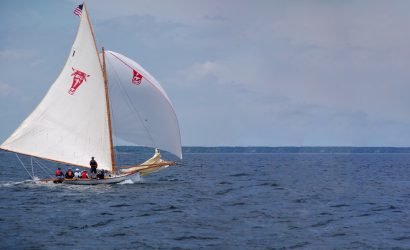Blue Crab population numbers have increased for the second straight year, but it’s still too early to celebrate. In order to ensure a healthy future for the Chesapeake Bay crustacean, the Chesapeake Bay Stock Assessment Committee (CBSAC) encourages resource manager to maintain a “risk-averse” approach to setting crabbing regulations. Just two years ago, the annual report indicated that the adult female crab population was too low, which is a reminder of just how quickly things can change with the blue crab.
The CBSAC collects date annually from points bay-wide during its winter dredge survey in both Maryland & Virginia. The group includes scientists and representatives from state governments and academic institutions in the region as well as federal fisheries scientists.
Findings from this year’s report include:
- Overall, blue crabs are doing fairly well. They are not overfished, and overfishing is not occurring.
- The total population of all crabs increased from 411 million crabs in 2015 to 553 million in 2016. This level continues an upward trend since 2014, but is still below peaks around 800 million seen in the early 1990s and in 2012.
- The number of female crabs increased; there were an estimated 194 million spawning-age female crabs in the Chesapeake Bay at the start of the 2016 crabbing season. This is above the established threshold of 70 million, but below the target of 215 million. (In 2015, the number of female crabs was 101 million.)
- The target is for crabbers to harvest about 25%—but no more than 34%—of female blue crabs each year. In 2015, only 15% of the female population was harvested.
- Numbers of juvenile crabs are about the same as last year; there were an estimated 271 million juvenile crabs in the Bay at the start of 2016 crabbing season, 269 in 2015. As these crabs mature to be adults, some will be big enough to be harvested this fall; and others will be mature adults next year.
- Last year’s overall Bay-wide commercial harvest of blue crabs was 49.6 million pounds (2015). This is up from 2014’s 35.2 million pounds, which was the lowest harvest recorded in the last 25 years.
“The blue crab population is at a healthy level. Having both juvenile and adult components at or above the long-term average has only happened once since 1994. It is encouraging to see adult females rebound from a depleted state only two years ago, but that also serves as a reminder of how quickly things can change with this animal,” said Glenn Davis of the Maryland Department of Natural Resources, who also serves as chair of the Chesapeake Bay Stock Assessment Committee. “We encourage the jurisdictions that manage blue crabs in the Bay—Maryland, Virginia, and the Potomac River Fisheries Commission—to maintain current management strategies that are responsive to population status, and with the goal of preserving sufficient female spawning stock for 2017.”
For the long term, the Blue Crab Advisory Report recommends that management jurisdictions coordinate their management actions, which may include year-round sanctuary areas, focus on quantifying levels of fishing effort, and reviewing how the blue crab population could be affected if people who currently have—but don’t use—commercial crabbing licenses began using them again.
More information on Chesapeake Bay Program outcomes related to blue crabs are available at www.chesapeakebay.net/chesapeakebaywatershedagreement/goal/sustainable_fisheries.







